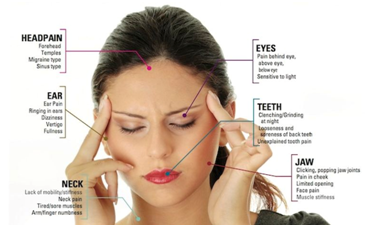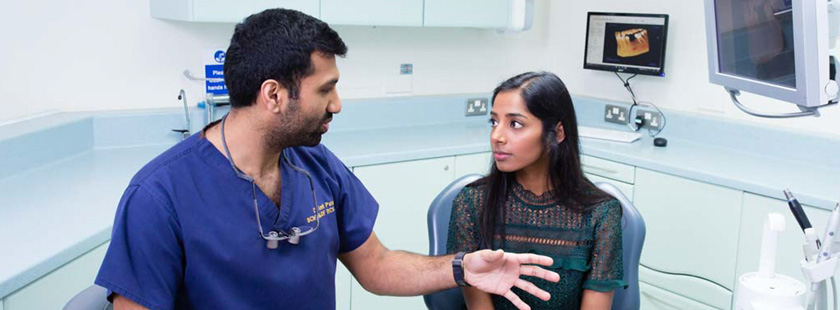Tempromandibular Disorder (TMD)
Do you suffer with pain in your jaw joints?
This could be a condition called Tempromandibular Disorder (TMD). TMD is the 2nd most common musculoskeletal pain, with lower back pain being the first. About 33% of the population has at least one TMD symptom. TMD is a disorder of the Tempromandibular Joint (TMJ).
What is the TMJ?
The jaw is also known as the TMJ or Temporomandibular Joint. It can be painful as the result of injury, inflammatory disease, poor postures and habits or growth disorders.
The TMJ is made up of several parts: the lower jaw (or mandible) and the socket (or temporal bone). In between the mandible and the socket is a disc. The disc allows the joint to glide smoothly on opening and closing. The joint is also held in place by muscles and ligaments.
What are the signs and symptoms of TMD?
Pain is the most common symptom of TMJ problems, although not everyone gets pain. Symptoms can include:
- Pain in the jaw joints and facial muscles
- Clicking, grinding or locking of the jaw
- Headaches & Dizziness
- Difficulty opening or closing the mouth comfortably
- Pain on talking, chewing (especially hard food) & yawning
- Ear pain, ringing in the ears (tinnitus) & hearing loss
What causes TMJ pain?
There are a number of causes and frequently it is a combination of these rather than one single cause:
- Trauma, for example a blow to the jaw either directly to the joint or elsewhere on the jaw.
- Overactivity of the jaw muscles. This can occur from continuous clenching or grinding the teeth.
- Wear and tear of the cartilage inside in the joint
- Arthritis
- Increased sensitivity to pain linked to stress
Advice
- Apply heat or ice for 15-20 minutes on the area of pain (for example hot water bottle or warm flannel)
- Painkillers (Seek advice from your dentist first)
- Massage the joint and surrounding muscles
DO:
- Exercise your jaw regularly on your physiotherapist’s or dentists advice.
- Be aware when you are clenching or grinding your teeth.
- Change to a soft food diet and avoid hard and chewy foods.
- Cut tough food into small pieces.
AVOID:
- Excessive chewing (e.g. Nails, gum, pen tops & your cheek). This stops the jaw from having a rest.
- Chewing gum and nuts
- Excessive mouth opening (e.g. Yawning).
- Resting your jaw in your hand or holding your telephone to your ear using just your shoulders.
- Sleeping face down, as this puts a strain on the neck.
Posture Correction
Bad posture in sitting or lying causes prolonged over-stretching of the ligaments and surrounding tissues including those of the jaw. qBy learning to keep a good posture, it is possible to prevent or relieve your neck and jaw pain.
Splint Therapy
The way your teeth meet together can influence how forces go through the muscles around your face and the movement of the jaw joint. Reducing the biting forces or preventing teeth grinding together can reduce loading through the joint and allow it to relax. Splints can be particularly useful at night time if you clench or grind your teeth.

Dr Amit Patel BChD MJDF RCS (ENG) DIP IMP DENT RCS (ENG) MCLINDENT Fixed & Removable Prosthodontics Dist. (LON)
Brickfields Dental Care


